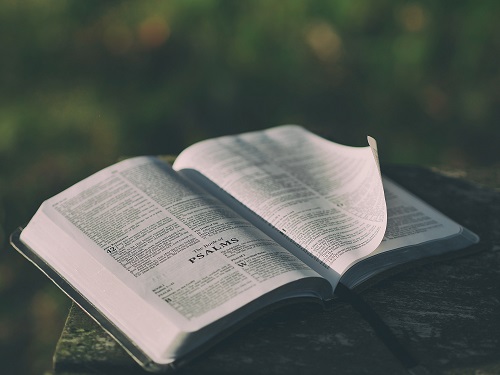B. The Bible in Dialogue with Questions of the Day: The Message of the Eucharist Today
The Eucharist has been at the source and centre of Christianity down through the ages, and still remains so. Reflection on it brings to mind many demands of Christian living, as many as belief in the living Christ himself does. Instituted at the Last Supper, the last of his meals with followers, it recalls the many meals during his life and the significance of these, eating with the marginalized and the outcast. In Mark’s gospel, after the multiplications of the loaves, in a journey across the Sea of Galilee the evangelist notes that the apostles had forgotten to bring bread with them, having only one loaf. Jesus warns of the danger of certain leaven (yeast). The apostles think that he is referring to their lack of bread. Jesus reminds them of his multiplication of the loaves, and of their lack of understanding of the significance of the miracle (Mark 8:14-21). It is a curious text, but the point seems to be that Jesus is calling on his apostles (and the church) to reflect on the miracles of the leaves, his meals, eventually the bread and wine become Eucharist and their significance as a signs and pledge of his saving and encouraging presence with the church, in times of need and always. There are so many aspects of the Eucharistic mystery that call for reflection.
The 2012 50th Eucharistic International Congress in Dublin had as its theme “The Eucharist: Communion with Christ and with One Another”. The theme reminds us of the place of the living Christ in the Eucharist as a source of personal union, communion, with God and with one another, Christ’s brothers and sisters.
The real presence of Christ under the species of bread and wine is a mystery, to be understood by faith. Already in Christ’s day, as represented in John’s Gospel, his Jewish listeners objected: “How can this man give us his flesh to eat?” Jesus replies insisting on his teaching. When many of his disciples said; “This is a hard teaching; who can listen to it?” among other points Jesus replies: “What if you were to see the Sin of Man ascending where he was before?” (John 6:52-65). We grasp the mystery of his Eucharistic presence better when we consider it in the context of Jesus, true man and true God, his ascent into heaven, and enthronement at God’s right hand. Down the centuries the Church has taken Jesus’ words on the bread and wine as his body and blood literally and lived with the mystery, a mystery as ever hard to put in human words. She has refused the view that the bread and wine only represent the body and blood of Christ. At the consecration there is a transformation, in some way, of the elements bread and wine involved. Her belief was incarnated in the respect for the bread and wine after the consecration, in the reservation of the Blessed Sacrament and in Eucharistic devotion. These were the manners in which the faithful expressed, and continue to express, their faith in Christ’s Eucharistic presence. When the belief was challenged by Berengarius, the Church formally responded in 1079 that at the consecration the bread and wine were substantially changed into the Body and Blood of Christ. In the Fourth Lateran Council (1215) this change was referred to as transubstantiation. The Council of Trent (1551) took up the question once again at the Reformation affirming that this change at the consecration the “holy Catholic Church properly and appropriately calls transubstantiation”, words repeated in the more recent (1994) Catechism of the Catholic Church. (paragraph 1376).Such Christian and Catholic beliefs as “consubstantial” and “transubstantiation”, not being words current in ordinary discourse, should not be the subjects of popular opinion polls. They are terms chosen by the Church to make clear her position on certain mysteries.
Questions are still being asked, by the young and not so young at to how we can deny the evidence of our eyes that after the consecration of the elements the bread is not bread but the Body of Christ and the wine not wine but the Blood of Christ. The question and the reply to it are old, candidly perceived and reflected on in the light of faith. We have a clear instance of this in the catechesis addressed to the newly baptised in the Jerusalem Church in the fourth century by its religious leader. In this it is stated that after the consecration we see the bread and it looks as before, but then we recall Christ’s words “This is my Body”, and can we deny this?. Similarly with the wine, and Christ’s word’s: “This is my Blood”. Can we deny this?. Thus is has been down the ages, and is today. We are in the present of a mystery. We admit our sight and profess our faith.

